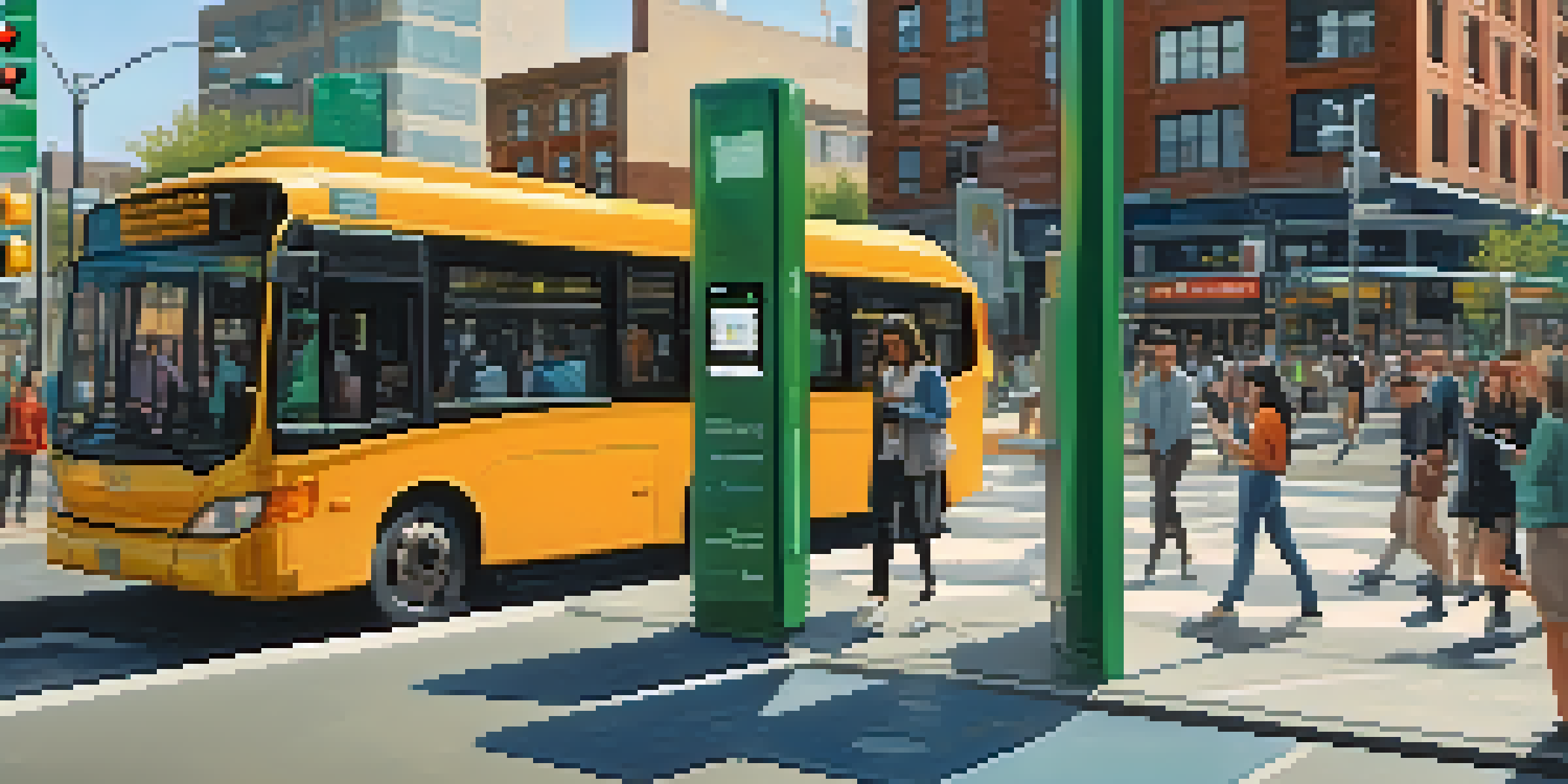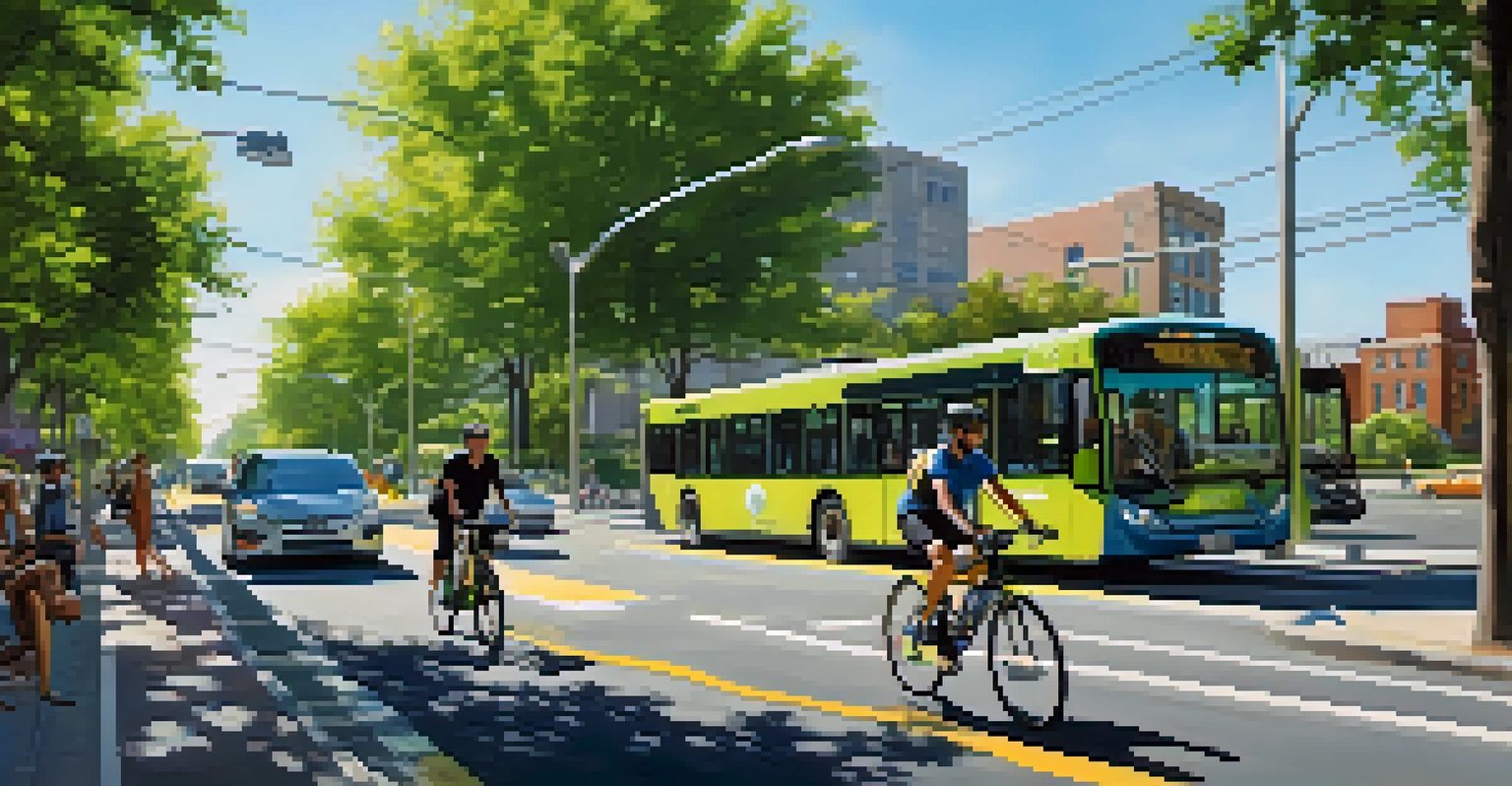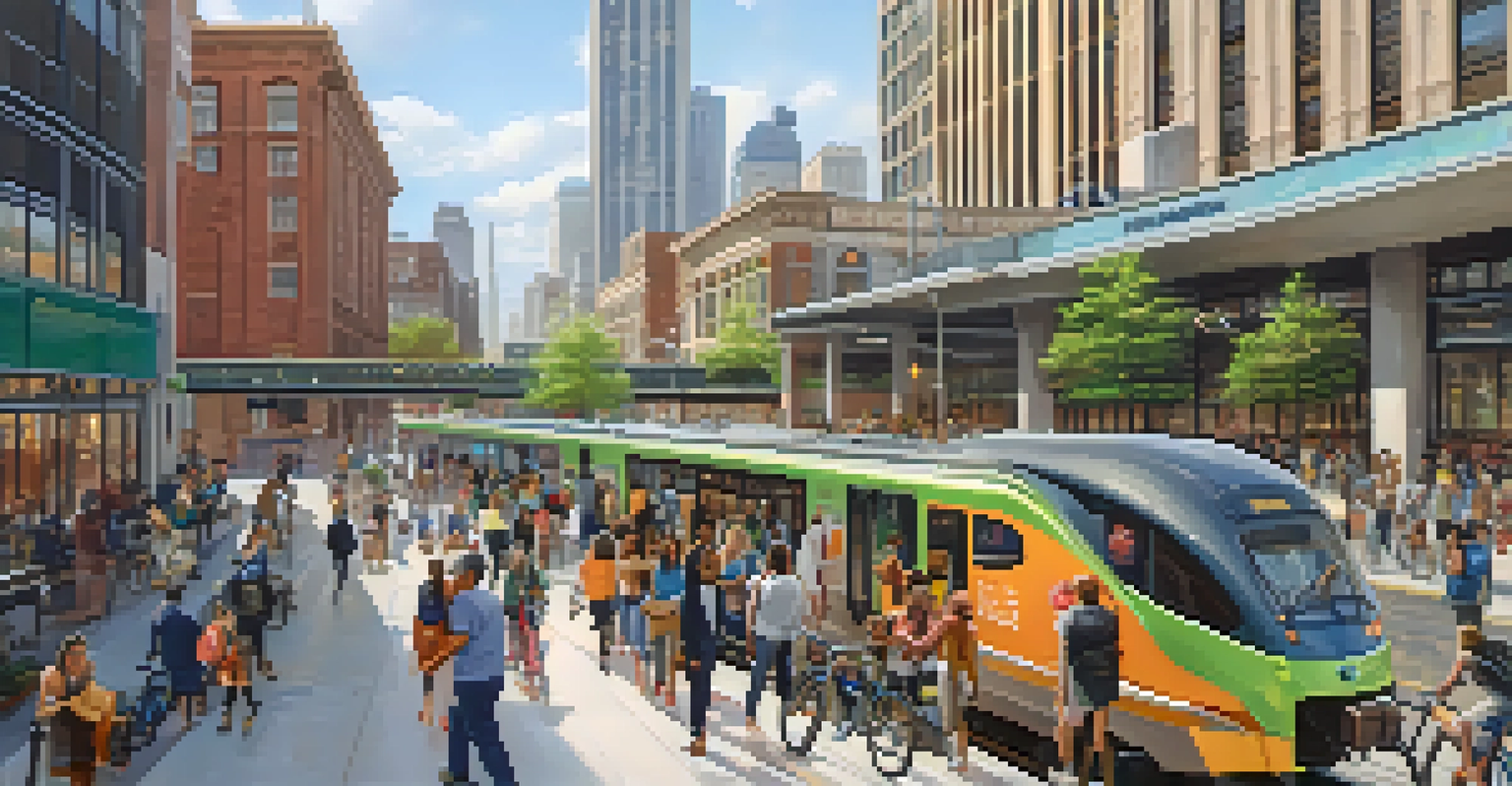The Future of Newark’s Transportation Systems: Trends to Watch

The Rise of Smart Transportation Technologies in Newark
As Newark continues to evolve, smart transportation technologies are becoming a focal point. Innovations like real-time tracking and data analytics are enhancing the efficiency of public transport systems. Imagine a world where you can check the exact arrival time of your bus from your smartphone—this is becoming a reality in Newark.
The greatest danger in times of turbulence is not the turbulence; it is to act with yesterday's logic.
These technologies not only improve user experience but also allow city planners to analyze patterns and make informed decisions. For instance, smart traffic signals can adapt to real-time traffic conditions, reducing congestion and travel times. This seamless integration of technology is paving the way for a more connected and efficient city.
Moreover, embracing smart technologies can lead to significant cost savings for both the city and its residents. By optimizing routes and reducing wait times, Newark can enhance the overall quality of life, making it more attractive to residents and visitors alike.
Sustainable Transportation: A Green Future for Newark
Sustainability is at the forefront of Newark's transportation planning. With increasing awareness about climate change, the city is prioritizing eco-friendly options like electric buses and bike-sharing programs. This shift not only helps reduce carbon emissions but also promotes healthier lifestyles among residents.

For example, the introduction of dedicated bike lanes encourages more people to consider cycling as a viable commuting option. This not only alleviates traffic congestion but also fosters a sense of community among cyclists. Imagine riding through Newark’s streets, surrounded by fellow eco-conscious commuters—this vision is becoming more plausible every day.
Smart Tech Enhances Transport in Newark
Innovations like real-time tracking and smart traffic signals are improving public transport efficiency and user experience in Newark.
Additionally, Newark's commitment to sustainability can attract green businesses and eco-friendly investments. As more cities strive for greener initiatives, Newark can position itself as a leader in sustainable urban transportation, setting an example for others to follow.
The Role of Public Transportation in Urban Development
Public transportation is a key player in Newark's urban development strategy. As the city expands, enhancing public transit options can lead to economic growth and increased accessibility. Well-connected neighborhoods can thrive, allowing residents to easily access jobs, education, and services.
Sustainability is not a destination; it's a journey that we must embark on together.
Consider how efficient transit systems can uplift underserved communities, providing them with opportunities they might not have had otherwise. Improved public transport not only boosts local economies but also enriches the overall fabric of the city. It's about creating a network that works for everyone.
Moreover, investing in public transportation can also attract tourists, encouraging them to explore the rich culture and history of Newark. A robust transit system acts as a gateway, making the city more inviting and accessible for visitors, thus benefiting local businesses and the overall economy.
Integrating Multi-modal Transportation Options
The future of Newark's transportation systems hinges on integrating various modes of transportation. From buses and trains to bicycles and walking paths, a multi-modal approach ensures seamless connectivity. This integration makes it easier for residents to choose the most efficient and convenient means of travel.
Imagine hopping off a train and easily transitioning to a bike-share program to reach your final destination. This flexibility not only saves time but also reduces dependency on personal vehicles, alleviating traffic and parking issues. The goal is to create a cohesive network that caters to diverse commuting needs.
Sustainable Options for a Greener City
Newark is prioritizing eco-friendly transportation solutions, such as electric buses and bike-sharing programs, to promote sustainability.
Furthermore, promoting multi-modal transportation options can lead to a more engaged and active community. When residents feel encouraged to explore their city through different modes of transport, they are more likely to discover hidden gems and connect with their surroundings.
Autonomous Vehicles: Changing the Transportation Landscape
Autonomous vehicles (AVs) are set to revolutionize Newark's transportation systems. With technology advancing rapidly, the possibility of self-driving cars navigating city streets is no longer a distant dream. This shift could significantly reduce traffic accidents and improve road safety for all users.
Envision a future where AVs are integrated with public transportation, providing last-mile solutions for commuters. This could mean that after taking a bus or train, a self-driving shuttle could take you directly to your doorstep. Such innovations can enhance convenience and encourage more people to utilize public transit.
However, the introduction of AVs also raises questions about regulations and infrastructure. Newark will need to adapt its roads, traffic signals, and policies to accommodate this new technology, ensuring that it complements existing systems while improving overall efficiency.
Community Engagement in Transportation Planning
Community engagement is vital in shaping Newark's transportation future. By involving residents in the planning process, city officials can gain valuable insights into the needs and preferences of the community. When people feel heard, they are more likely to support initiatives that enhance their daily lives.
Consider how public forums, surveys, and workshops can create a dialogue between city planners and residents. This collaborative approach ensures that transportation solutions reflect the priorities of those who use them. It fosters a sense of ownership and responsibility among the community.
Community Input Shapes Transport Plans
Engaging residents in transportation planning helps ensure that solutions meet the community's needs and fosters a sense of ownership.
Moreover, engaging the community can lead to innovative ideas and solutions that planners might not have considered. By tapping into local knowledge and experiences, Newark can develop transportation systems that truly serve its diverse population.
The Impact of Telecommuting on Transportation Demand
The rise of telecommuting is reshaping transportation demand in Newark. With more people working remotely, the traditional rush-hour traffic patterns are changing dramatically. This shift presents both challenges and opportunities for the city’s transportation systems.
On one hand, reduced traffic congestion during peak hours can lead to smoother commutes for those who still travel to work. On the other hand, city planners must adapt to this new normal by evaluating the need for public transportation services. It's crucial to analyze how these changes affect overall transit ridership and infrastructure.

As remote work becomes more ingrained in our culture, Newark has the chance to rethink its transportation strategies. By assessing the evolving needs of its workforce, the city can create a more flexible and responsive transportation system that accommodates various work styles.